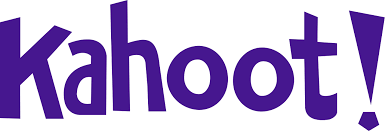
Kahoot! is a digital game-based student response system that allows teachers and learners to interact through competitive knowledge games using existing infrastructure. To host a live Kahoot, questions appear on a shared screen – a big screen in a room or on mobile devices. Participants join a live Kahoot by entering a unique PIN in their own browser, or the Kahoot! app, and submit their answers.
Kahoot! is a fun game that promotes active learning and supports educators in creating multiple-choice question quizzes. A variety of implementation options can be easily adapted to best meet learner needs. Whether instructors will be teaching in-person, hybrid, or online, Kahoot can serve to open opportunities for gauging baseline knowledge of learners, supporting formative assessments, and offering individual- or team-based challenges in a fun and engaging way! The games can be played anywhere, in person or virtually, using any device with an internet connection.
Website: Kahoot!
Research indicates that the thoughtful integration of gamification tools in the classroom can serve to better facilitate formative assessment and promote student learning. Hosting a fast, fun, and engaging trivia game is a great way to put your students’ content knowledge to the test, or simply to change up the pace of class and facilitate a fun group icebreaker. There are a variety of types of games that can be played synchronously or asynchronously.
- Introduce new topics – Present key points at the beginning of class to introduce new content so students have a better idea of what to expect in this lesson.
- Instruct in class and virtually – Kahoot can be used to teach interactive lessons and engage students both in class and in online or hybrid learning.
- Pre-assess knowledge – Gather insights that will help you plan your interactive lessons in the best possible way, aligned with where a class currently stands.
- Increase participation – Increase focus and motivate students to participate with interactive questions such as quiz, poll, type answer, and more.
- Instantly assess learning – With real-time reports, Kahoot! can help you instantly assess how the class feels about a topic so you can adjust your interactive lesson.
- Recap on learning content – Add a slide with key points of topics you’ve covered to help students remember the most important information from the lesson.
- Reinforce knowledge after lessons – Assign student-paced challenges that learners can complete to study and practice to reinforce knowledge after your lesson.
- Make lectures interactive – Combine quiz, polls, word cloud and other question types with slides to instruct in a more engaging way remotely or in class.
- Break the ice and spark discussion.
- Gauge student opinions – Use polls and word cloud questions to collect opinions and encourage reluctant students to have a say.
Kahoot! functions as an interactive technology to engage students in the learning environment through games, interactive live and online lessons, polls and quizzes, and interactive lectures. Gamification is an increasingly common phenomenon in education to facilitate formative assessment and to promote student learning.
Kahoot ranks 5/5 stars for accessibility. To learn more about the accessibility review, contact otl@du.edu.
- Supports Text to Speech (TTS) such as NVDA, Jaws, or Voiceover
- Supports Dictation in Kahoot 360 (paid account) such as Dragon NaturallySpeaking or Voice Dictation.
- Supports Alternative Input Experience/Keyboard Navigation
- Supports Screen Magnification and Color Contrast
- Dedication to Accessibility and Content Creator Experience
- Knowledge Base Articles – Kahoot Alt Text, Kahoot Captioning. The videos/images embedded in the platform can be edited for captions and alt text.
- How to add alt text to Kahoot.
- How to embed a YouTube video Into a Kahoot. Remediation would need to take place to get the video to YouTube and into the Kahoot with captions.
Watch the following video to learn how to play a game of Kahoot!
Watch the following video to learn about student-paced challenges and how to use them with Kahoot!
This technology is not included with the University of Denver. Faculty, staff, and students may need to purchase a subscription. The technology may offer educational pricing with an “.edu” email address. Free trials or free accounts may also be available through the technology website.
The University of Denver does not directly provide technical support. The Office of Teaching and Learning may consult on pedagogy.
Research articles on Kahoot! (2021, September 16).
Sailer, Hense, J. U., Mayr, S. K., & Mandl, H. (2017). How gamification motivates: An experimental study of the effects of specific game design elements on psychological need satisfaction. Computers in Human Behavior, 69, 371–380. https://doi.org/10.1016/j.chb.2016.12.033
Wang, A. (2020, April 17). Impact of Kahoot! in Higher Education – Research Roundup. Kahoot!

OTL Technology Rating
GREEN technologies are appropriate for teaching at DU. The tool does not pose a risk to student privacy or FERPA regulations..
